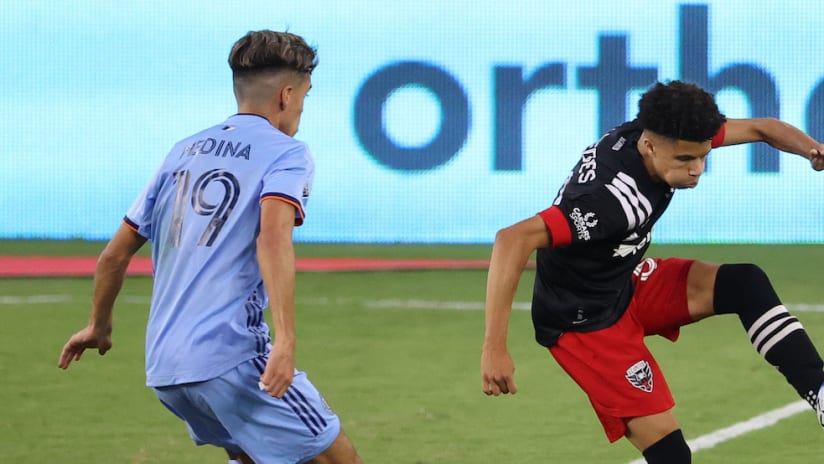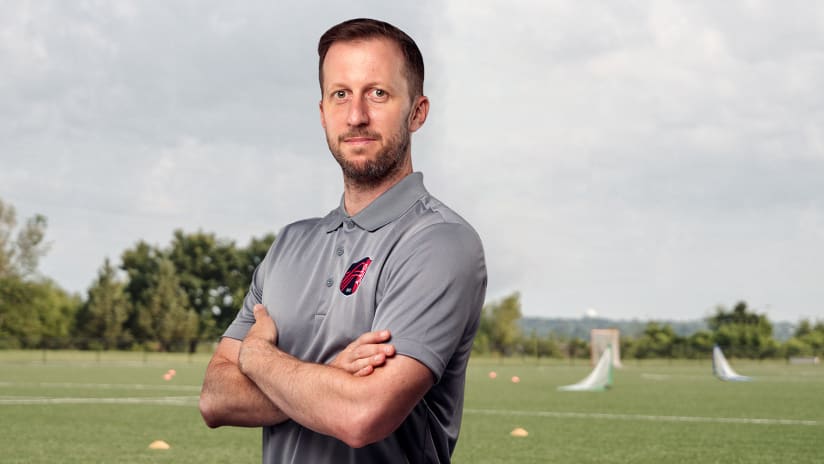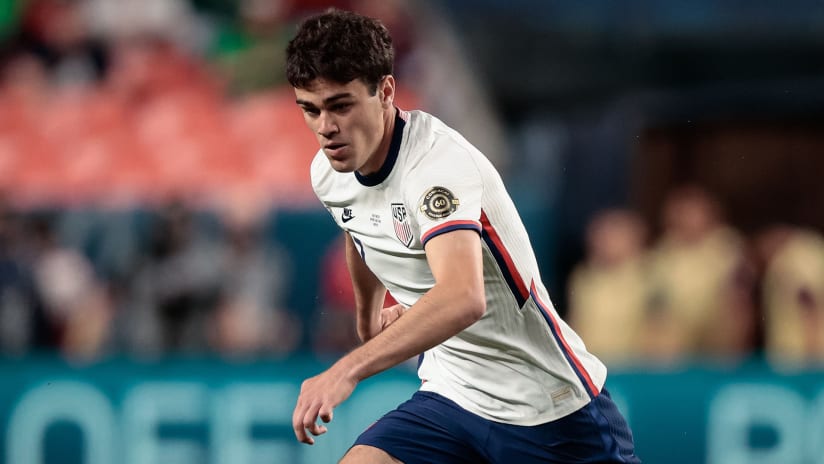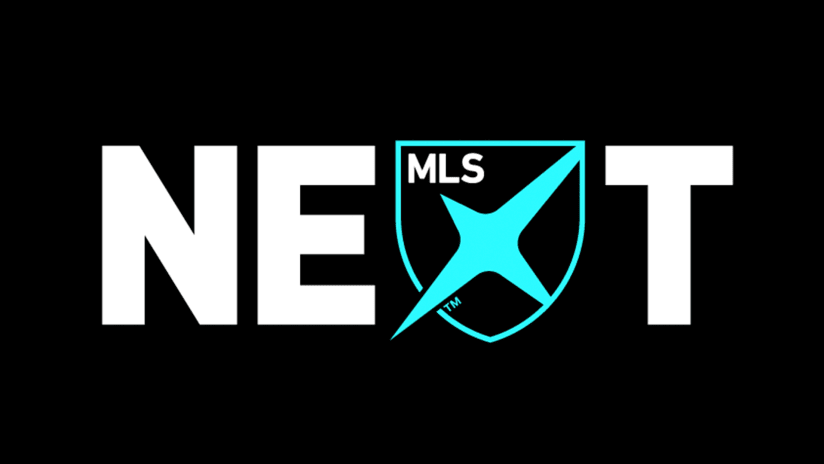Kevin Paredes is the D.C. United academy’s latest and greatest success story, having carved out a starting role with the first team this season, his first in MLS, at the relatively tender age of 17. So it meant something when the Homegrown midfielder turned up at Segra Field on Sunday for D.C.’s opening matches in the inaugural season of the new MLS NEXT youth league.
“Kevin was at the games over the weekend and just having him on the sideline watching, the kids’ faces glow seeing Kevin on the sidelines,” United’s academy director Dave Sanford explained in an exclusive conversation with MLSsoccer.com on Tuesday. “A lot has changed in a year for Kevin, and a lot has changed in this academy over the last year, so there's a lot of excitement around the whole setup.”
The Black-and-Red provided another massive boost in that respect on Monday afternoon, announcing via winger Julian Gressel’s online show, the club’s academy will now be fully funded, ending the annual dues they’ve been charging a majority of their youth players.
The fees, which ranged from $1,500-2,000 per season, were modest by the standards of competitive youth soccer in the United States and covered less than a quarter of D.C.’s overall academy costs. Need-based scholarships were provided to about 40 percent of United’s players, and club officials emphasize no player was turned away for financial reasons.
Still, it was one of the only such fees in MLS and inevitably took a toll on D.C.’s credibility and desirability in the youth space. So Monday’s news may prove a significant milestone for a club sitting in one of the richest talent hotbeds in the nation.
“We want to develop our own players in our backyard and we have them playing in our first team,” said general manager Dave Kasper, fitting this week’s move into the wider process of building out the club’s infrastructure, from the planning and construction of Audi Field to the launch of their USL Championship side Loudoun United and their venue, Segra Field, and the adjacent training facility scheduled to come online next year.
“There's a civic pride in helping our players and having them play one day with the first team, but then with the eye that if those players want to go to Europe, that there's an opportunity to generate some revenue from player sales that you could reinvest back into the team and the product. Some players like Jordan Morris, it seems like he's going to have a very long and fruitful career in Major League Soccer; some players will choose to stay and play in our league and have great careers. Other players want to go and have the experience in Europe.”
United’s DMV (D.C.-Maryland-Virginia) stomping grounds are home to a thriving youth soccer scene that has produced many professionals like Kyle Beckerman, Jeremy Ebobisse, Eryk Williamson, Joe Gyau and Jacori Hayes in addition to D.C. Homegrowns like Bill Hamid and Andy Najar.

Portland Timbers forward Jeremy Ebobisse is among several players to come up through the DMV | USA Today Sports Images
It’s eminently capable of supporting a highly productive academy pipeline like those in Philadelphia, Dallas and Salt Lake, though the Black-and-Red aim to craft their own identity with a hybrid approach to roster-building. Wayne Rooney’s year and a half in the U.S. capital underlined the value of an established star for building relevance in the market, drawing numbers to Audi Field and elevating the squad with a transcendent talent.
“Ultimately we want to do both. We want to always continue to look for players that move the needle globally, like a Wayne Rooney,” said Kasper. “There's not a lot of those types of players out there that check all the boxes like Wayne did, but we will always keep an eye on that. We will always look for young international talent, ie a Lucho Acosta, and a lot of young talent we've brought in the past few years, as well as our veteran players inside our league, who are very key, and then the Homegrown players as well. It's a huge asset to be able to develop your own players.”
Paredes is only one of several promising young prospects on D.C.’s current roster, with fellow HGPs Donovan Pines, Moses Nyeman and Griffin Yow – the latter two are also teens who signed straight from the academy – looking like useful pieces for both the future and present. That “tangible” pathway helps Sanford and his staff inspire United’s current youth crops as well as those they seek to recruit to the program going forward.
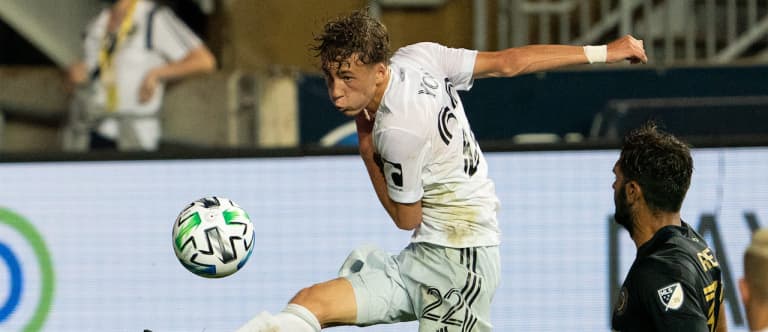
Griffin Yow signed with D.C United straight from the club's academy. | USA Today Sports Images
“For me it's a statement from the club to the local soccer community and MLS,” said Sanford of Monday’s announcement. “With [going] fully funded, Kevin, Griffin, Moses, kids see that we're dedicated in this space and this statement also allows us to fully stand behind that. So for me, that's the exciting thing, that we’re fully funded, our Homegrown Players are playing and we have a proof of concept right now.”
The next layers of this process: Making sure their academy is accessible to their entire region, not only financially, but also in geographic and logistical terms, and bolstering that talent pool with select imports via a fledgling residency program. D.C.’s catchment area spans a large and densely populated area with daunting transportation challenges for kids and families commuting to training sessions, so the club plan to maintain a strong presence in the District and Maryland in addition to the new complex in Loudoun County, Virginia.
“We have a lot of flexibility and a lot of resources coming online,” said Sanford, “which is ultimately a part of the greater vision of the club and how the academy fits into it.”

